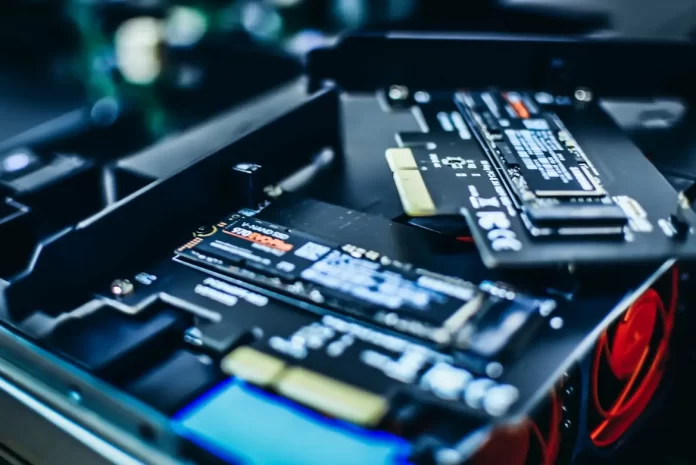Modern devices such as laptops, smartphones or various consoles or desktops are really complex devices. They have many different functions and capabilities. To realize their potential, they need to have powerful hardware and enough memory.
About 15 years ago the memory of a computer was enough to have 30-50 GB of memory for normal work and even to be able to install there different programs or games. However, in today’s environment, the system alone on your computer can take up to 50-60 GB of memory.
In addition, if you use your computer for video games or graphic editing, for example, the programs that you may need will also take more than a dozen gigabytes.
That is why in recent years users are increasingly asking what kind of media to choose for their purposes. For example in a laptop or miniature PC. One of the most popular solutions, in this case, is an SSD or eMMC.
What is an eMMC
If we’re talking about small and high-performance storage media then you will certainly hear of an eMMC.
It’s essentially a variant of the MMC memory card standard. If there are different variants of an eMMC. For example RS-MMC, DV-MMC, MMCplus and MMCmobile, MMCmicro, MiCard, SecureMMC, eMMC, etc.
eMMC is an internal memory that is most often used in small devices. For example portable PCs, laptops, smartphones. This is due to its low price and small size.
The range of use of this memory is tablets, smartphones, digital cameras, some removable devices, home appliances, entry-level laptops. In fact, this memory can be used in any computer or laptop with eMMC simply by inserting the memory card into the slot.
However, it’s worth noting that in recent years companies have become much less likely to build into their devices MMC slot. Instead of this much more often there is a slot for an SD card.
Therefore, more often this memory is used only in different household appliances or smartphones with the Android system.
The carrier offers flash memory systems at a low cost. It is a kind of embedded storage solution with a MultiMediaCard interface, flash memory, and the main controller.
What is an SSD
An SSD or solid-state drive is one of the most expensive and high-performance data storage solutions available today. It offers the best performance compared to other types of storage media. However, it’s also the most expensive. It’s also more tolerant of any physical impact.
They have the fastest read/write speeds and the quietest operation. SSD also has a relatively low power consumption. This solution is best suited for users who are critical to the performance of their systems and their speed of operation.
While the cost of SSDs has been decreasing over time, they’re still more expensive than any other storage device. For now, a PC or laptop with an SSD is the right choice if you have high demands on your computer hardware and a reasonable budget.
What is the difference between an SSD and an eMMC
Both are based on the principles of NAND. However. there are actually a lot of important differences between them. Most importantly eMMC is flash memory which is based on the MMC standard and SSD is solid-state storage.
Other important differences include:
- The two types of drives have different functions. This means that eMMC is used as a temporary storage medium for portable devices while SSD is a permanent storage medium. You need to choose the storage medium depending on your needs.
- They have different performances. An eMMC can handle smaller files better while an SDD can handle larger files. While an eMMC has a maximum transfer rate of 400mb/s, an SSD is much faster.
- The memory capacity of an eMMC is much smaller. An eMMC usually has 32GB or 64GB onboard memory, but you will rarely find models with 128GB. At the same time, SSDs have much larger storage capacities. They go up to 128GB, 256GB, 320GB, and 512GB.
- They have different types of connectivity. Often, an eMMC is simply soldered to your computer’s motherboard and an SSD is connected through a CATA port. If your motherboard doesn’t have a SATA interface, then you will be better off with an eMMC.
- They’re made up of different components. Whereas an SDR consists of high-powered chips and fast NAND flash memory, an eMMC consists of the same components as a regular flash drive or SD card.
- They’re needed for different target audiences. Because of the differences in price, users from different groups usually choose SSD or eMMC. While eMMC, because of its low cost, is widely used in household appliances and various portable devices, which aren’t so important high performance. An SSD is used in order to achieve the highest possible data transfer rate and to improve the performance of your device.
- An eMMC is smaller than an SSD. One of the disadvantages of an SDR is that it’s much larger than an eMMC memory, If you’re limited by space, you will simply have no room for an SDR drive.
As you can see from the examples above SSD has a lot more performance, this is the main argument in its favor. However, if your goal is a cheaper and more ergonomic solution, then an eMMC is perfect for you.






